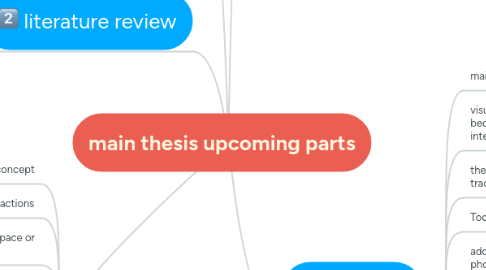main thesis upcoming parts
by Sahar Rabadi


1. introduction
1.1. general background
1.2. why i used this topic, crowds
1.3. researcher background and experience influences
1.4. researcher satiation and limitations
1.5. research aim, and objectives
2. literature review
2.1. urban design
2.2. crowds
2.3. Affordance, (that will discuss the materiality)
2.4. proximics
2.5. rhythms
3. theoretical framework
3.1. crowdability : affordance concept
3.2. clustering and declustering as actions
3.3. concept of share: crowds is share space or element
3.4. crowds is a socio-space, that means physical along with human
3.5. affordance-materiality concepts: pace changer, rhythm maker, direction changer,
3.6. theoretical pre-concepts
3.7. empirical post-concepts
3.8. crowd rhythms: everyday, seasonally and extraordinary
4. Methods
4.1. main approach is ethnography
4.1.1. visual ethnography
4.2. visual ethnography is my methodology, because i do observations without interviews or interacting with users
4.3. the method is: observations :(field, video, tracking)
4.4. Tools: filming, photo, diary (written notes)
4.5. addition tools: photo+text, drawing on photos, sketching, in order to get more deep understanding of the materiality
4.6. clarifying each of the 6 cases, background, date, time weather, selection justification
4.7. data analysis methodology
4.7.1. analytical methodology
4.8. connecting the theories with the practice
4.9. using affordance as the methodological theory
4.9.1. affordance is the lense to analyse the materiality of urban design and the actions
